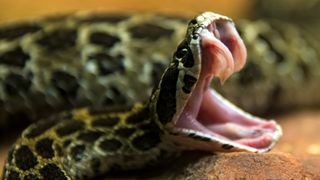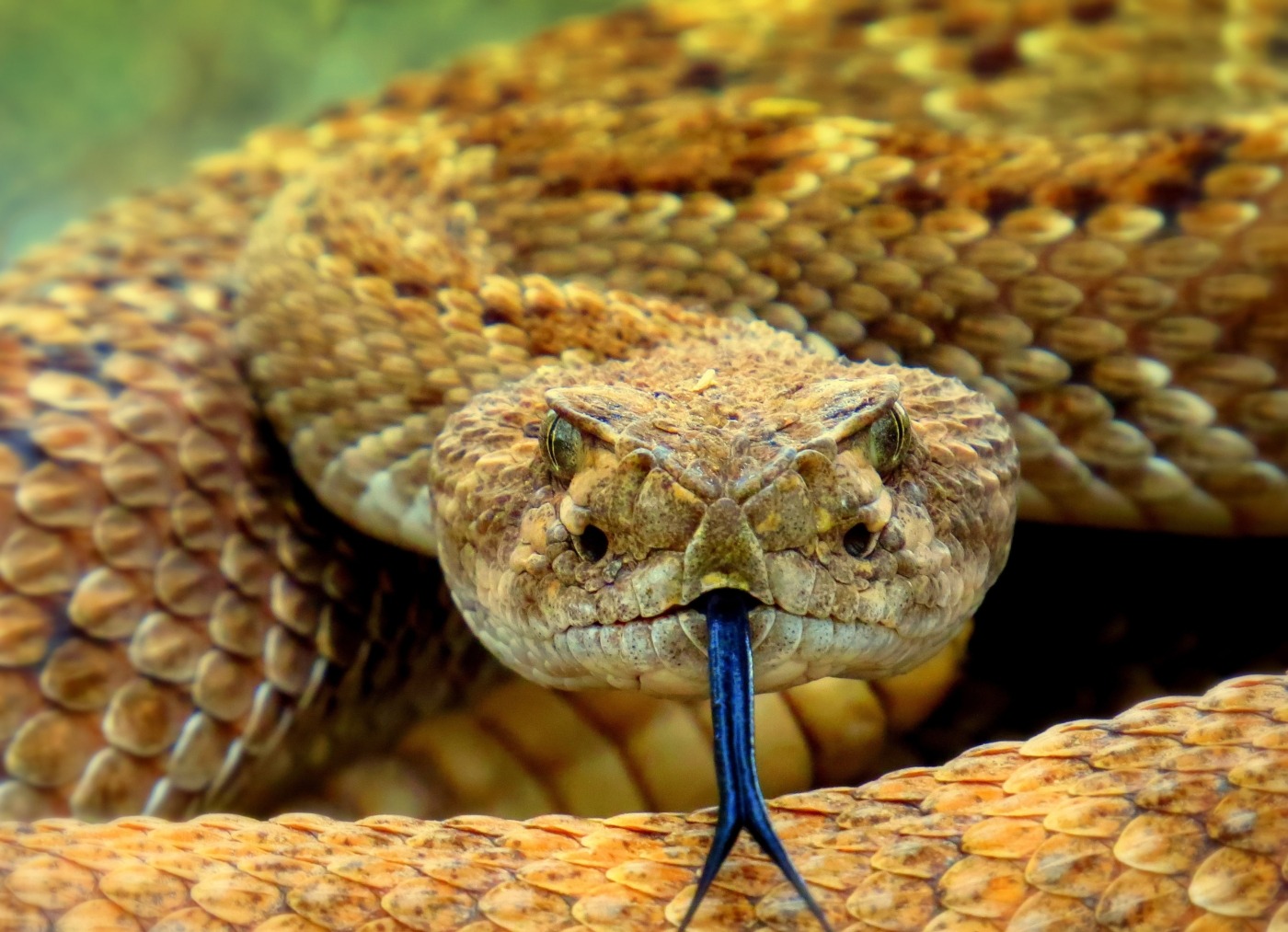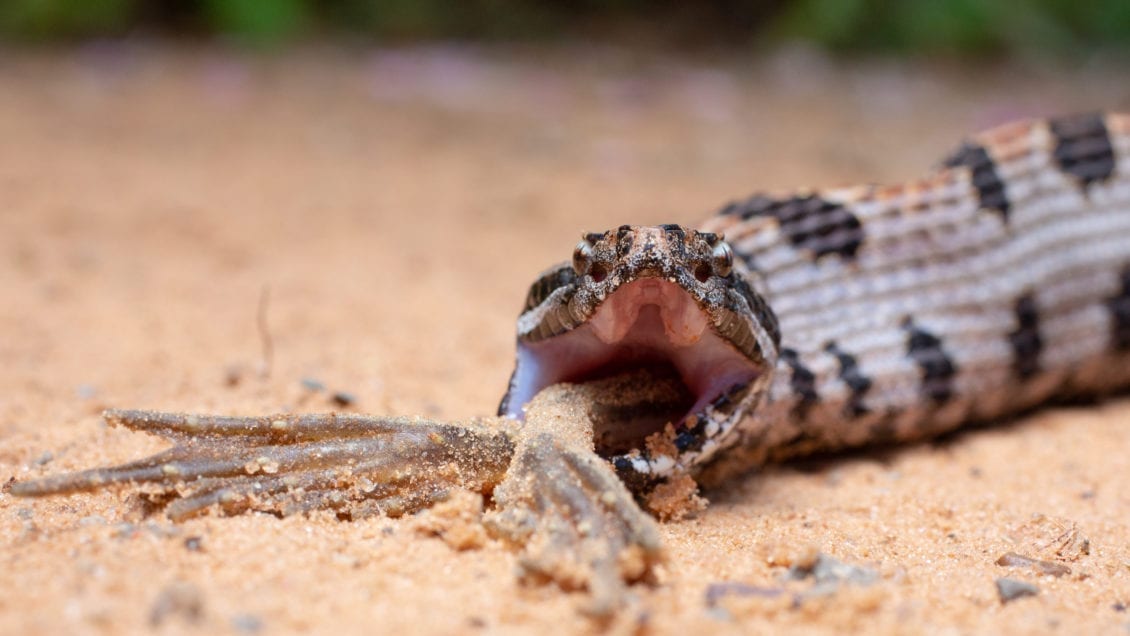Snakes have specialized teeth to inject toxins into prey.

A snake’s lightning-quick bite is the perfect way to inject venom into prey. Aiding and abetting this violent attack are the long, curved fangs snakes have evolved to dose their next meal with venom — toxins that hurt, disable or even kill their victim. But which came first: the venom or the fangs?

Unlike some other animal fangs, snake fangs are highly adapted to act as a delivery system for toxins. For example, many other fanged animals, like wolves or cats, use their fangs for stabbing and ripping meat. But snake fangs have grooves along their sides or full hollows within the teeth that help them inject venom into prey, said Alessandro Palci, a research associate in the College of Science and Engineering at Flinders University in Australia, who specializes in paleontology and evolution.
Palci and his team published their recent research into snake fangs in the journal Proceedings of the Royal Society B: Biological Sciences in August 2021. The research team teased apart how snakes’ specialized venom-delivery teeth evolved.
Venomous fangs first developed as grooves at the base of snakes’ teeth. These grooves most likely evolved to keep teeth firmly attached to the jaw, as snake teeth typically have very shallow roots, the researchers found. These wrinkly grooves, called plicidentine, give the jaws more surface area to adhere to, Palci said.
Fangs developed from these wrinkles in the teeth, according to Palci’s team, who studied 3D microCT images of the fangs of 19 snake species and three lizard species, as well as thinly made slides from a few of the specimens. In every species the scientists studied — those that were and were not venomous, and those with and without fangs — they found these grooves, which indicates they likely developed in a non-venomous ancestral snake species. Venomous snakes co-opted these pre-existing grooves to deliver venom into their prey, the researchers found.

“What is special about fanged snakes is that their teeth present much larger and deeper ‘wrinkles,'” Palci said. “When one of these wrinkles grows larger than the others it forms a groove along the tooth.”
This groove shepherds the toxic liquid from nearby venom glands into the prey while the snake bites down. “The simplest venom fangs only have a shallow groove on their surface,” Palci told Live Science in an email, but these grooves are still much more efficient at injecting venom than solid teeth.
“In more advanced snakes (e.g. vipers and cobras) the groove has deepened to the point that its margins meet, sealing the groove and forming a hollow, tube-like structure that resembles the needle of a syringe,” Palci said. “These grooves were selected over millions of years of evolution to produce large and highly efficient syringe-like fangs.”
So which came first? “Venom, in some mild form, is thought to have appeared very early in the common ancestor of snakes and some lizards (a group called Toxicofera),” Palci said. “Therefore, venom fangs evolved after venom was already present. The presence of venom was likely an important prerequisite for the evolution of venom fangs.”
Snakes are pretty unique in their evolution of these specialized fangs. “Venom fangs have not evolved very often outside of snakes,” Palci said. But snakes have found them very useful, different species of snake have independently evolved venom fangs from plicidentine over and over again.
Of the few other animals that have developed venomous fangs, some interesting examples include:
- A small group of burrowing mammals in the Caribbean called solenodons that look like pudgy shrews.
- Tiny fish called fang blennies, which use their fangs to administer a painless venom that drops their victims’ blood pressure.
- Ancient, extinct reptiles called Uatchitodon, which are only known by the discovery of their teeth.
source: livescience.com








